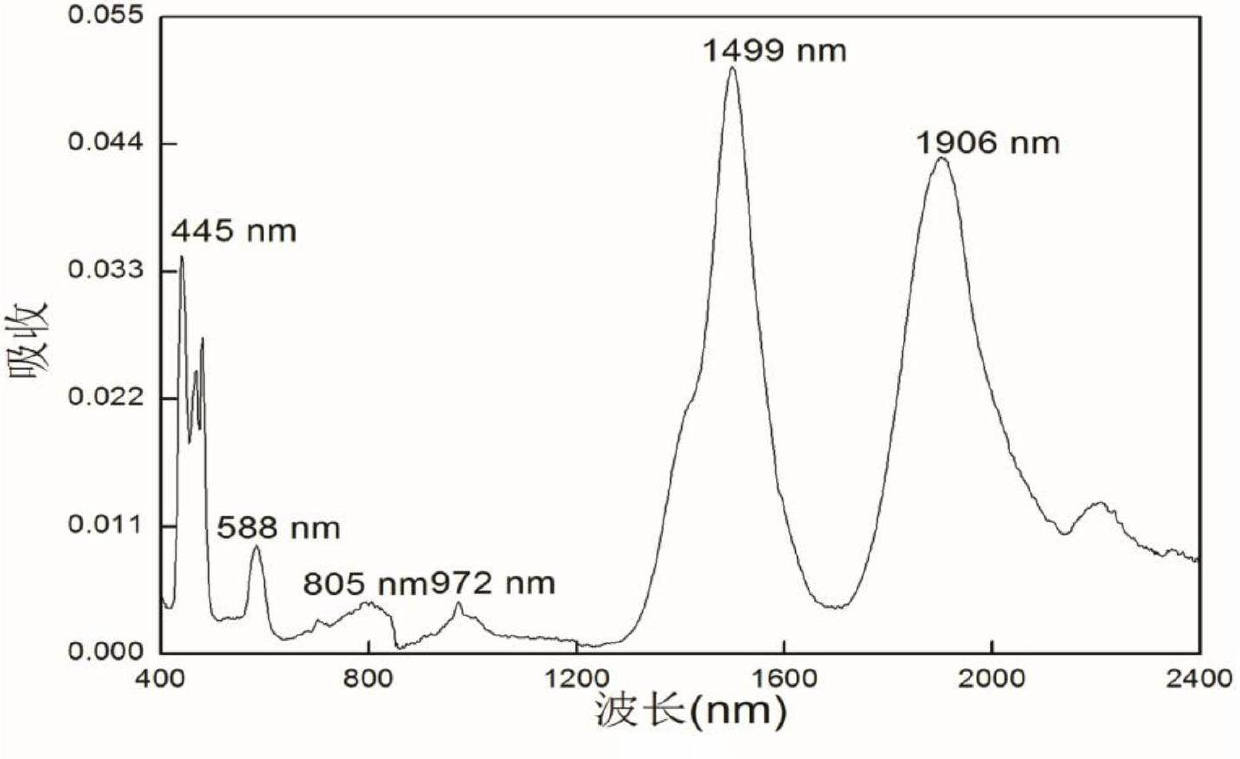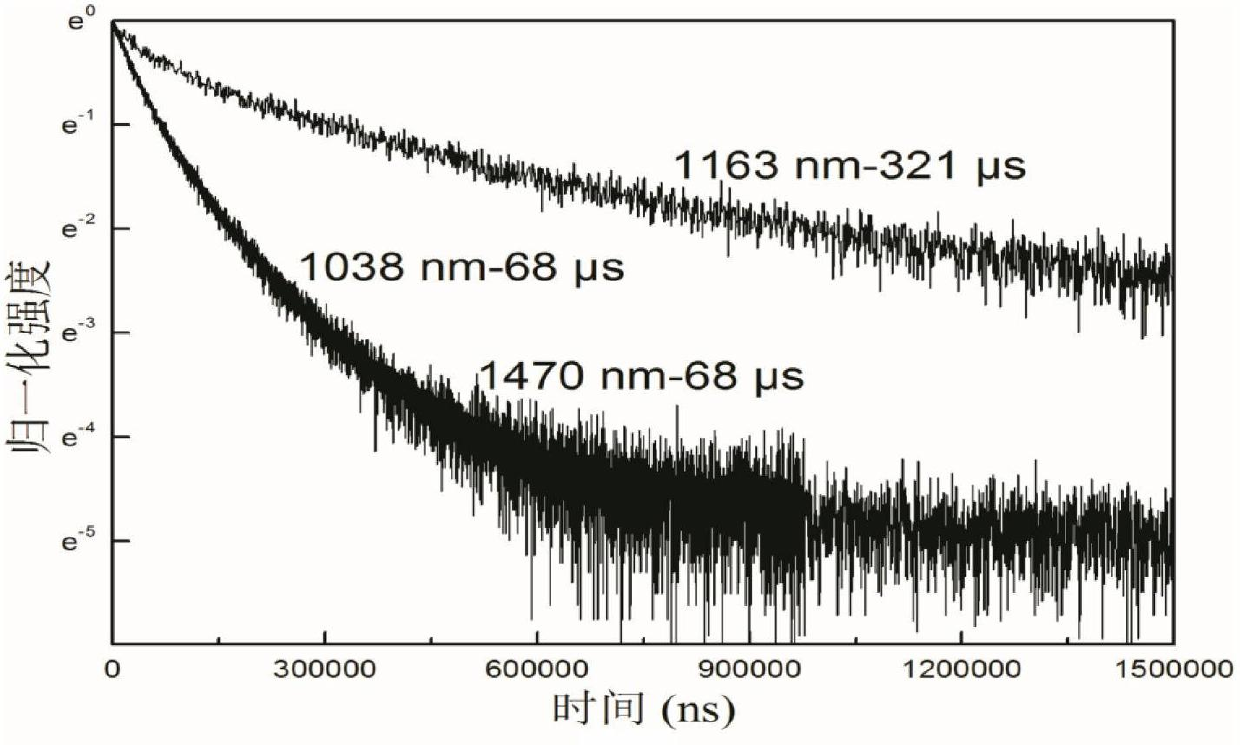Praseodymium-doped borophosphate base near-infrared ultra wide band luminescent glass and preparation method thereof
A luminescent glass and phosphate technology, which is applied in the field of praseodymium-doped borophosphate-based near-infrared ultra-broadband luminescent glass and its preparation, can solve the problems of high melting temperature, low fluorescence emission intensity, and low pump light absorption capacity, etc. The preparation process is simple, the luminous intensity is enhanced, and the preparation conditions are improved
- Summary
- Abstract
- Description
- Claims
- Application Information
AI Technical Summary
Problems solved by technology
Method used
Image
Examples
Embodiment 1-27
[0038] The preparation method of embodiment 1-27 is as follows:
[0039] In Example 1-27, P 2 o 5 , B 2 o 3 、Al 2 o 3 respectively by NH 4 h 2 PO 4 、H 3 BO 3 ,,Al(OH) 3 Introduced, other raw materials are selected to introduce corresponding oxides. Then select and analyze pure raw materials, respectively weigh 50g of glass frit according to the proportions (mol%) of Examples 1-27 in Table 1, Table 2, and Table 3, respectively, fully grind and mix them in a corundum mortar, and put in corundum Crucible and fully pre-fired at 800-1000°C, then grind and mix evenly again, put each pot of glass frit in a medium-high temperature furnace at 1450-1600°C for melting, keep warm for 90-120 minutes, and pour the glass liquid in Preheated to a certain temperature on the steel plate grinding tool. After the glass is formed, the glass sample is annealed at 590-620 ° C for 4-6 hours, and then cooled to room temperature with the furnace. Grinding and polishing into 1mm thick glass...
PUM
 Login to View More
Login to View More Abstract
Description
Claims
Application Information
 Login to View More
Login to View More - R&D
- Intellectual Property
- Life Sciences
- Materials
- Tech Scout
- Unparalleled Data Quality
- Higher Quality Content
- 60% Fewer Hallucinations
Browse by: Latest US Patents, China's latest patents, Technical Efficacy Thesaurus, Application Domain, Technology Topic, Popular Technical Reports.
© 2025 PatSnap. All rights reserved.Legal|Privacy policy|Modern Slavery Act Transparency Statement|Sitemap|About US| Contact US: help@patsnap.com



